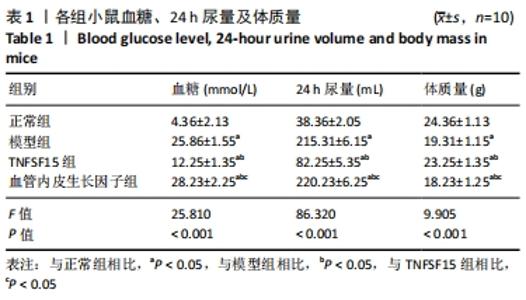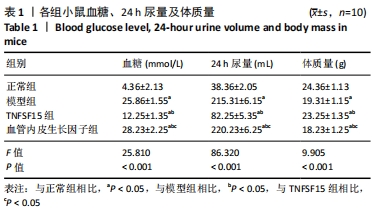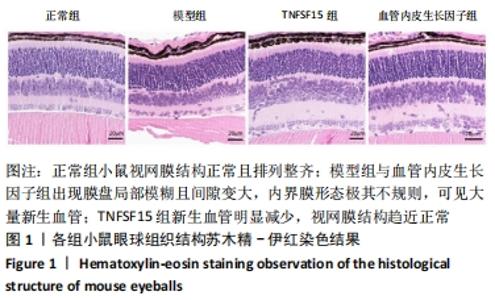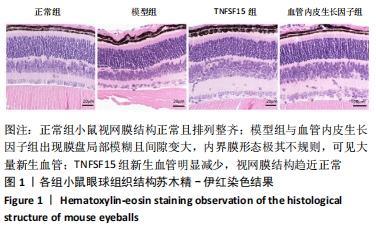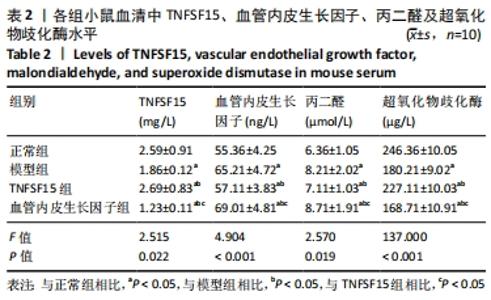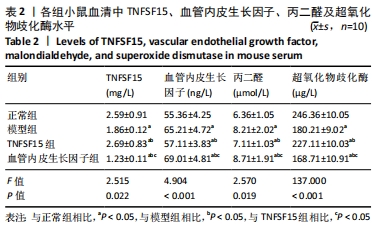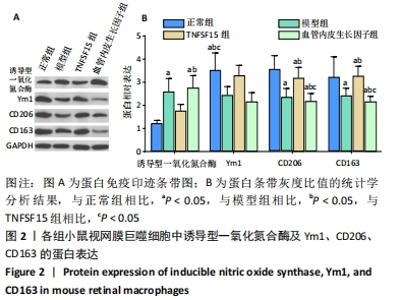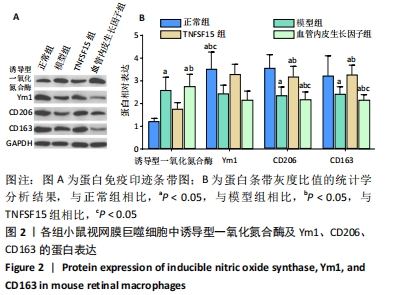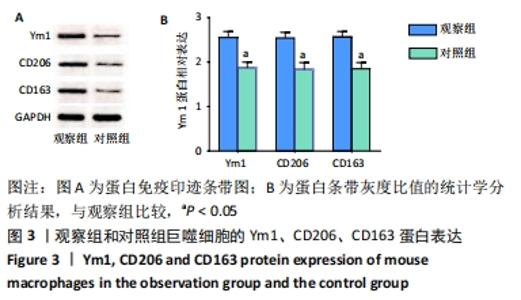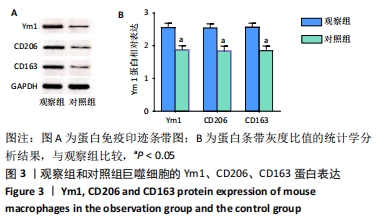[1] 杨钦钦, 马全鑫, 施佳君, 等. 一种新型糖尿病视网膜病变大鼠模型的建立及其病理特点研究[J]. 中华糖尿病杂志,2021,13(5):490-497.
[2] 罗影,左中夫,张俏,等. 葛花总黄酮对糖尿病视网膜病变大鼠视网膜Müller细胞的保护作用[J]. 眼科新进展,2020,40(11):1033-1037.
[3] 许琳,祝莹,吕波,等. 白细胞介素-8、γ干扰素和D-二聚体水平变化对糖尿病视网膜病变大鼠病情的影响[J]. 临床和实验医学杂志,2020,19(23): 2487-2490.
[4] 刘安琪, 左中夫, 吴传玲,等. Netrin-1对糖尿病视网膜病变大鼠的保护作用[J]. 眼科新进展,2020,40(1):11-15.
[5] 王开玲, 周海艳. 五味子乙素通过诱导血红素加氧酶1表达改善糖尿病大鼠的视网膜病变[J].中国中医眼科杂志,2020,30(1):15-19.
[6] SUN R, HEDL M, ABRAHAM C. TNFSF15 Promotes Antimicrobial Pathways in Human Macrophages and These Are Modulated by TNFSF15 Disease-Risk Variants. Cell Mol Gastroenterol Hepatol. 2021;11(1):249-272.
[7] 柯丹丹, 孙旭芳. 抗血管内皮生长因子药物在增生型糖尿病视网膜病变中的应用新进展[J]. 中华眼底病杂志,2021,37(2):162-168.
[8] 时倩倩, 高彦, 王李理,等. 杞菊地黄汤对糖尿病视网膜病变模型大鼠视网膜新生血管的作用[J]. 眼科新进展,2020,40(4):327-331.
[9] 王德赛, 刘姝林, 张学东. 糖尿病黄斑缺血的评估及玻璃体腔注射抗血管内皮生长因子治疗对糖尿病黄斑缺血的影响[J]. 中华眼底病杂志,2019,35(3): 311-315.
[10] 杨雁, 钟渝, 孟利,等. LIGHT/TNFSF14减轻顺铂诱导的小鼠急性肾损伤及机制[J]. 细胞与分子免疫学杂志,2019,35(10):897-902.
[11] 高慧, 仵红娇, 谢俞宁,等. TNFSF15启动子区-358 T>C遗传变异与肝癌发病风险的相关性研究[J]. 中国临床药理学杂志,2019(16):1731-1734.
[12] ZHANG ZH, CHEN QZ, JIANG F,et al. Changes in TL1A levels and associated cytokines during pathogenesis of diabetic retinopathy. Mol Med Rep. 2017;15(2): 573-580.
[13] 江沛, 李由, 徐砜,等. TNFSF14对STZ诱发Ⅰ型糖尿病的影响及其机制初探[J]. 中国免疫学杂志,2020,36(1):10-13.
[14] 秦婷婷, 李凯. TNFSF15对肿瘤脉管生成调控的临床意义及研究进展[J]. 肿瘤防治研究,2020,47(7):567-570.
[15] 常文娟, 赵新程, 李娇,等. 银屑病患者皮损问充质干细胞IGFBP3和TNFSF15 mRNA的表达[J]. 中国皮肤性病学杂志,2018,32(3):258-262.
[16] 李柏胜, 肖颖, 钱方兴,等. 乙型肝炎肝硬化患者血清KLF2和TNFSF15表达与门静脉血流动力学相关性研究[J]. 肝脏,2018,23(4):30-31.
[17] 杨贝贝, 王丹丹, 耿丽,等. 肿瘤坏死因子超家族在炎症性肠病中的作用[J]. 中华炎性肠病杂志(中英文),2020,4(1):55-58.
[18] ZHAO H, ZHANG Q. Signaling in TNFSF15-mediated Suppression of VEGF Production in Endothelial Cells. Methods Mol Biol. 2021;2248:1-18.
[19] BUENO-SILVA B, ROSALEN PL, ALENCAR SM, et al. Vestitol drives LPS-activated macrophages into M2 phenotype through modulation of NF-κB pathway. Int Immunopharmacol. 2020;82:106329.
[20] 朱医高, 逄越, 李庆伟. 肿瘤坏死因子受体超家族成员在免疫系统和疾病中的研究[J]. 中国生物化学与分子生物学报,2020,36(2):141-151.
|
